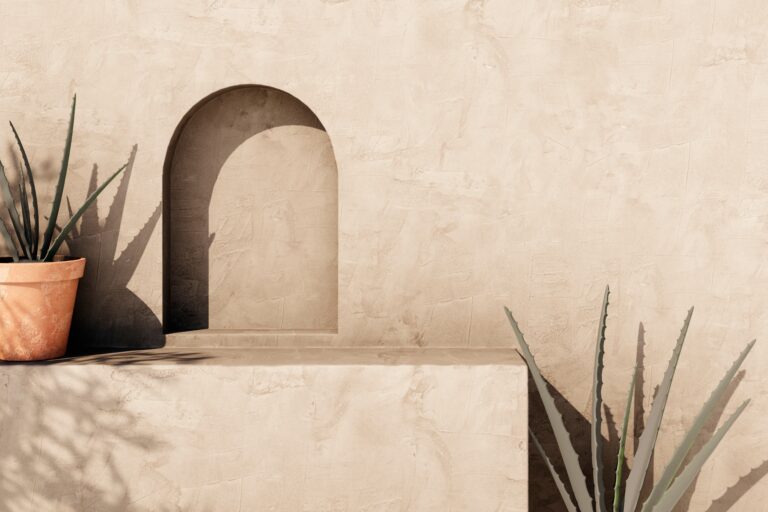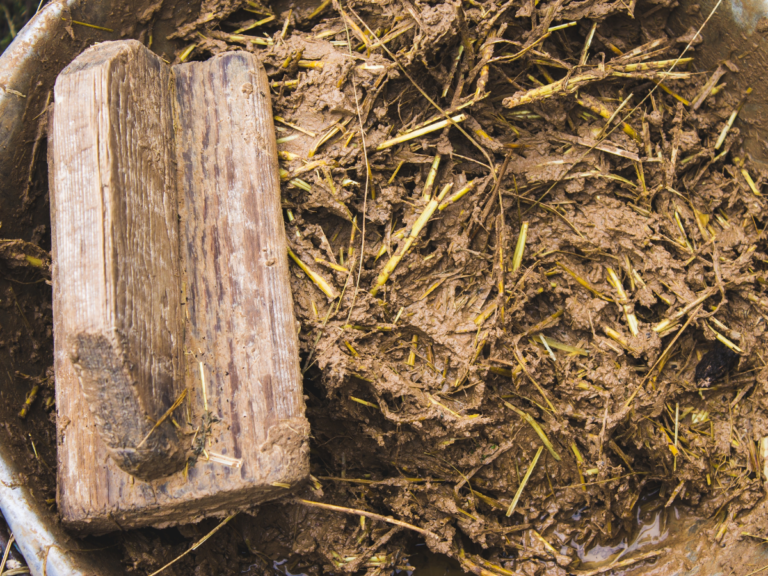Embracing Earth's Beauty and Sustainability
Exploring Clay Plasters and Bricks in Modern Construction

Earth, a timeless and sustainable building material, has been used by civilisations for centuries due to its abundance, versatility, and eco-friendly characteristics.
From natural aesthetics to thermal performance, clay plasters and bricks blend tradition and innovation in modern construction practices.
1. Clay Plasters: A Return to Authenticity and Wellness
Clay plasters, also known as earthen plasters, embody a connection to nature and a sense of authenticity in interior finishes. Made from a blend of clay, sand, and natural fibres, clay plasters create warm, textured walls that evoke a sense of tranquillity and comfort. Beyond their aesthetic appeal, clay plasters offer functional benefits such as regulating indoor humidity levels, absorbing odours, and improving indoor air quality.
2. Clay Bricks: Timeless Elegance and Sustainable Strength
Clay bricks are enduring symbols of architectural heritage, renowned for their durability, thermal performance, and aesthetic versatility. Crafted from kiln-fired clay to high temperatures, clay bricks exhibit exceptional strength and longevity, making them desirable for structural and decorative applications. In addition to their longevity, clay bricks offer excellent thermal mass properties, helping to regulate indoor temperatures and reduce energy consumption. By incorporating clay bricks in construction, builders can achieve timeless elegance, structural integrity, and sustainable building envelopes that stand the test of time.
3. Sustainability in Earth-Based Construction
The use of clay plasters and clay bricks exemplifies sustainable construction practices by harnessing the inherent properties of earth materials. Clay is abundant, locally sourced, and biodegradable, making it a renewable and environmentally friendly building material. Clay plasters and bricks require minimal processing and have low embodied energy compared to conventional building materials, contributing to reduced carbon emissions and resource conservation. Embracing earth-based construction methods supports sustainable building practices and fosters a deeper connection to the natural environment and cultural heritage.
4. Design Possibilities and Contemporary Applications
Clay plasters and bricks offer various design possibilities, from rustic and traditional to modern and minimalist aesthetics. Their versatility allows architects and designers to create unique textures, colours, and patterns that reflect a space’s desired style and character. In contemporary applications, clay plasters and bricks are commonly used in sustainable building projects, eco-friendly renovations, and heritage conservation efforts, showcasing earth-based construction techniques’ enduring charm and adaptability in the modern built environment.

Clay plasters and bricks serve as timeless embodiments of sustainability, beauty, and innovation in modern construction. By embracing the natural qualities of earth materials, builders can create spaces that exude authenticity, wellness, and environmental responsibility.
